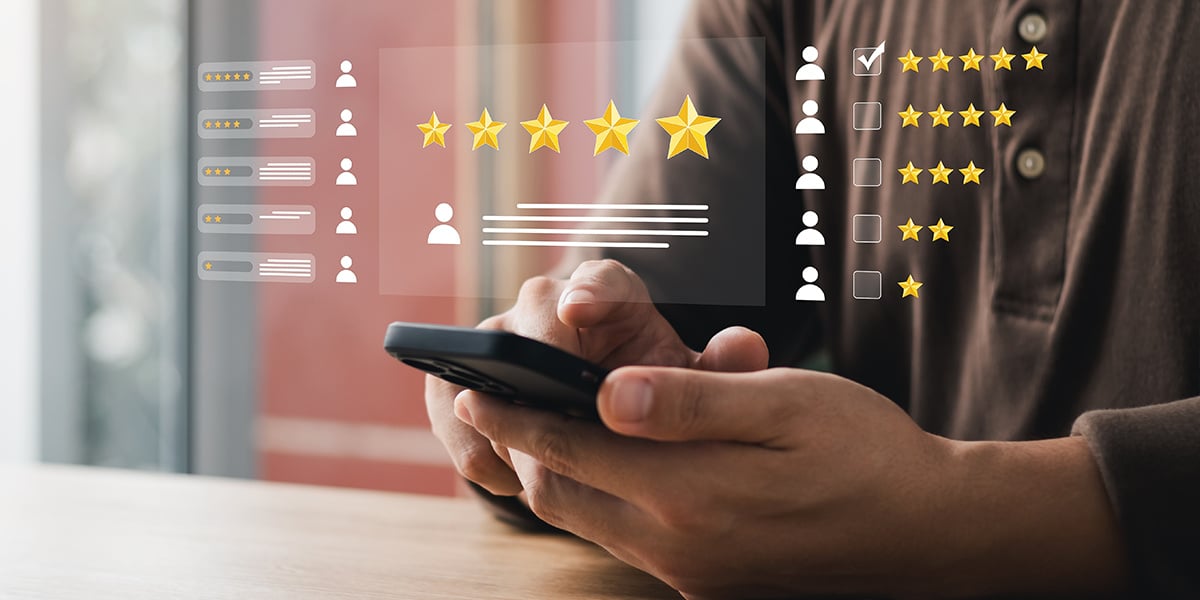Episode 42 Jan Uriga, a CX consultant, says the three most important aspects leaders need to focus on are the corporate culture, technology innovation and the customer. Without these, no business strategy can deliver CX excellence. This article summarises CX Insider podcast episode number 42 in which Jan elaborates on the interplay of these key areas.
Episode 42
Episode Summary
Pilar #1: The Customer
The main objective of any business in the world, no matter the size, is to serve a customer. However, according to Jan Uriga, that was not the case ten years ago. As an experienced CX consultant who has helped several companies enhance and leverage their customer experience over the years, many of them did not comprehend the true value of customer experience. Even more so, when Jan spoke to employees working in different departments within a client's company, most of them told him, " we are here to make money for the owner and shareholders. We are here to serve and make money." Luckily, these responses have rapidly shifted to a more customer-centric approach in the last several years. From his personal observations, business leaders are now more focused on understanding who the customer is, their expectations, and their journey. It is crucial to communicate these customer personas across the company in all directions, horizontally and vertically, to make employees see customers as real people, ultimately giving more meaning to their work.
We are here to make money for the owner and shareholders. We are here to serve and make money.
Pilar #2: The Company Culture
It is common that the C-suite management shares a vision to adopt a customer-centric culture. However, more than often, the reality is different. Jan describes this in the following example: The CEO has a town hall meeting which he starts as, "our customer is at the heart of everything we do." After the meeting, they come into their office, turn on their computer, check their inbox and see that the Finance Director sent him an email saying, "we need to cut the cost by 10% no matter what." A bit later, the CEO speaks to the Operational Manager who tells him, "Well, we need to optimise things here and there because –" and so on. Fifteen minutes after the CEO's heroic speech about a customer-centric approach, they find themselves in a completely different game. The story's point is that if customer-centricity is not adopted by all employees within your company, you will fail to become customer-centric.
Pilar #3: Innovation
Research conducted to analyse what makes high-performing companies successful generally agrees that it is the combination of technology and customer experience. On the one hand, many companies choose the technology path as if it were the pill for everything. On the other, some companies only rely on the human touch. From Jan's personal observations, he noticed a clash between the organisation's and customers' desires. Both parties hope for the input of human touch and technology into the product or service delivery. However, customers prioritise human intervention, and organisations focus on technology adoption. The question is, how much technology is just enough?
This article summarises podcast episode 42 " The 3 Pillars of Effective Customer Experience" recorded by CX Insider. For more information, listen to the episode or contact Jan on his LinkedIn profile.
Written by Valentina Svobodova
Full episode transcript
Valentina: In today's episode, Greg and I are talking to Jan Uriga, a highly experienced CX professional, who's going to talk to us about how technology, adoption and employee centricity can help improve CX in your company. Along with this episode, you can also download a template to build your own customer experience journey, you can find this template on your LinkedIn page if you search for CX Insider podcast. I hope you enjoy the episode. And if you do, please don't forget to like share comment or subscribe on your preferred channel. Hello, everybody, welcome to another CX Insider podcast episode, this is Valentina, and today Greg and I are speaking to Jan Uriga. Hello, Greg and Jan. How are you guys?
Jan: Hello. Thank you for having me. Hello, Greg.
Greg: Hi, Valentina.
Valentina: Jan, I would like to introduce you a bit to our listeners. Jan has dedicated many, many years to strategic management consultancy and he also specializes in innovation, management and leadership and corporate culture. Apart from that, you're also a social psychologist who did a research on IQ and Machiavellianism in leadership, if I'm correct, which is great, because at the moment I'm actually reading the Prince great literature recommended. I don't recommend to use it as a guide, but it's good to expand your knowledge. And also you lecture at the Comenius University in Bratislava and Vienna University of Technology. I think I think I'm humble when I say it's quite a successful career that you have
Jan: And hopefully, it's not the end.
Valentina: Well, I would like to start off asking you how how did you actually from being a social psychologist, how did you get into the world of CX? And also because we've never had we've never had a guest from Central Europe. And you're based in the Czech Republic and the term customer experience, obviously, it wasn't invented yesterday, but even today, businesses still cannot agree on the definition itself. So I guess your experience of working as a consultant in Central Europe might be completely different because the nature of the businesses may be they may approach differently than what we are used to here in the UK. Right.
Jan: Exactly. Here in the region, speaking about the CX is like, what abbreviation means? It took us a while to really explain that CX means customer experience. But hear in Czech Republic or in Slovakia where I'm originally from, we use the English customer experience phrase and that we need to explain and to define what is behind the secret. Because the more English or other language phrases you use, the more uncertainty you bring into the conversation, especially when you climb the ladder. So up in the hierarchy of leaders, you are talking to the more simple language you have to use and they need to speak about the experience. This is something that has emotional resonance, I think, and the reason why people interact with other people. So in the business world, why clients interact with the organization. So my journey from social psychology to customer experiences quite small because a social intelligence is about having smart, meaningful and good interaction with others. And before the communication starts, you need to be able to understand to to have the empathy, to see in what circumstances the entire conversation happens. And this is the beginning of any of good relationship. And I brought this skill and the knowledge from the social psychology research also into the business in my past 12 years were about unifying the reasons why one tribe of the people want to interact with the other tribe of the people. And again, that's about the organization and the customer. And hopefully, the CX will become not just the abbreviation or the smart slogan, but also the brick. And that's my role to to promote and evangelize.
Valentina: Hmm, thank you. In our in our previous call, we were I was asking you about what your strategies are based on, and you said that they're usually built on these three pillars, corporate culture and innovation, which we will talk about in a minute, and also the customer itself. And now it's a it's a very broad topic. So I would like to know, could you elaborate a bit maybe. And how exactly do you incorporate the focus on the customer when building a strategy like when you build the strategy? Should organizations maybe start with the do not value proposition with their competitors?
Jan: In the very beginning, with the dialogue of the representatives of my clients, we speak about what type of business you do, and it doesn't matter whether you produce cement or you you're a dentist or you are a singer. At the end of the day we realize we are a people. So whatever we do, there is a someone who creates something and there is someone who takes or who buys something. So we are a people business. And if you don't understand the people within the business. And basically, the main objective of any business in the world or any enterprise in the world is to create the customer, maybe about the five, seven years ago when I asked people in the workshops, why do your enterprise exist? And they would reply to make money for our owner or the shareholders. And and we are here to serve, to make money. But maybe during the past two years, I see the very significant change in replying responding to this question. They say we are here to create the customer, to serve the customer, and the customer will bring us the money. And the journey to create the customer starts with understanding who is or who might be and who is our customer.
Jan: So to who we serve and to whom we do not want to serve. And this is the eye opener for many of the enterprises. And they sit and they elaborate on their persona. But there are the behavioral preferences of their clients if they want what they need, their objectives and the ones they create and display in front of the others, the persona template they see, wow, this is the real people that we are serving here, and this is the reason why my role in the company exists. So once they have the persona, we just jump to another step to the journey and go step by step how the client interacted with their product or the service and we are not perfect. So on that journey, we can identify a number of speed bumps or or hiccups and the role of the people organization is the narrow those those those barriers or to to create a seamless experience. And very often we need to create the solution, how to make it narrow. And I call it the innovation to find something that even with a very short period of time or maybe with a very limited amount of money, need to really close the gap between the expectation and the reality, between the promise and fulfilment of the promises.
Jan: And the last thing that it is really the showstopper of any customer experience or innovation practices in the company's culture. innovation that the CEO has a town hall meeting and he says the customer is the most important in everything that we do. Five minutes after another, returning back to your office and we turn on their computer and we check your inbox and you see that your finance director is arriving. You we need to cut the cost by 10 percent no matter what. Right. And then speak to operational manager. And he says, well, we need to optimize things A- because.. and so on and so on. So after 15 minutes, you're in a completely different game. And this is the thing that has to be also upgraded to call the customer-centric culture. And in my work with my clients or with the with the companies, I try to focus the kind people on those three elements of the same type of customer experience, then the innovation and the culture. And it brings the very tangible results and surprise, surprise very early after the first off,
Greg: I was really interesting on the I guess one question I would have following on from that is if we look at, for example, your career that you mentioned, I know that you've been on many customer experience evolutions with organizations of various types, and technology often plays a role in that that journey to a greater or lesser degree, I guess, in depending on the organization. But it would be great to get your thoughts on what you feel, I guess, is the appropriate approach to the use of technology when you're going on that journey of innovating your practices or innovating your customer experience. Should every organization focus on the adoption of new technologies in your experience? Has the adoption of new technologies played an important role or less so, yeah. What are your thoughts on that?
Jan: Well, if you take a look at the something it is called high performing organization, the high performing organization is the the organization that grows. Three years in a row, at least five percent, and both in revenue and the margin, and then they predict also another three years into the future, the same growth in both revenue and the margin by at least five percent. So all in all, the organization grows by one third by 30 percent in six years, and neither people nor technology will got crazy. So in the analysis, what is behind that? What is the secret sauce of the group? And I'm a big fan of data and fact-driven signs and there was a lot of studies and they confirmed that behind or the secret behind that organic growth, it's a combination of technology and customer experience. So there are a lot of companies who believe that the technology is the path that is the is the is the syrup or the pill for everything. And it doesn't. And there are the other type of the organizations that believe that only the human touch is something that will help them. And this will bring me into the second observation, which I personally call the technology paradox. But what is behind it when you ask people today, how do they experience the interaction with their providers? They say 75 percent of the customers say that they miss the human touch. Thirty five percent say I miss the someone on the other side of the phone or email or whatever.
Jan: If you go inside the organization boardrooms and you ask them what is your top priority, they say to adopt technology. So the customers are saying we want more people these days and they say, no, we want more technology. And this is the real paradox or even the the moment that every organization is the adept for the special Nobel Prize over what is the sweet spot, when technology really is right enough or just enough for serving their customers, so I don't think there is organization in the world who can survive without technology, even though even the priest in the church used the digital board to show the number of the song to the people in the church. But if there is too much technology, there is a too much of those things. Then the the feeling of being really the customer in the centre of attention of the of the businesses is decreasing. This is the most of the day one of the most dangerous things that I observed. So technology, yes, because this is a belief the technology era know the future of technology the day the technology alive. So this is my view and I'm trying to really marry in the organization people from marketing and I.T. or technology. So the wedding comes when they start working together in a lot of agile processes and principles are creating the relationship not just good, but also happy.
Greg: Very interesting. I love that description there of a tech paradox, I think everyone listening to this podcast is going is going to quite heavily relate and say that's exactly what we face. So, yeah, very, very interesting. And I think that's a uniquely, very well put way of putting that challenge as well, because sometimes very complex challenges are quite hard to distill down. I think you did a fantastic job there of actually distilling that down. And I'm like, as I'm sure a lot of people are going to relate to that. I guess a follow-up question perhaps that comes from that for myself would be when we're looking at when when it works or when any organization is looking at the adoption of technology. Have in your career, have you seen better places to start when it comes to particular technologies? You know, should you start maybe more the simpler end and really look at those processes that involve more simple technologies? Or should you go for glory and go for alien facial recognition and the really advanced technologies, have you may be seen anywhere or have any advice to organizations about where to start and in terms of either complexity of technology or just different types of technology, that sort of thing?
Jan: Well, maybe I'll get back to a persona, the very first step in the organization of what type of technology to choose an adult is whether the technology will help to solve the problem or the decline. So not how to use technology to make more money, but what type of technology can help really ease the life of their customers, of their client and. Maybe if they like the curve of the evolution that is applied in other businesses is also applied in adoption of technology in CX, so the simplicity is the key, right? So there is no customer in the world who would say in the feedback forum, I would like to have more clicks or I would like to spend more seconds to submit any type of request? No, the simplicity of the king and the metric in this is called the customer effort score. So we measure how simple and how quick and customer many the problem will be solved. And this is exactly the role of technology, whether that or a different technology helps to relieve such a pain. And maybe if I again refer to the world simplicity, it goes with things like functional, webpage responsive, then that's that is the like the beginning of everything. And a lot of buildings that if you see all the skyscrapers that we see, they need to have really a very, very good foundation is like with the tree and also in the in the tech companies, there are a very, very strong roots that are not visible
Jan: And those things are the strong applications behind stable that if you build today, if you would like to vaccinate ten thousand people and you ask them to come into the waiting room, but then in five thousand looking in ten minutes, the entire system will go up. So that that is a problem that has nothing to do with the with the meaning of smart technology. So it's better to use a combination of call center web take and application and to offer it to the people. Choose the channel that is the more convenient for you to use. And once they change the channel from from the telephone to the chess board, they should experience a very seamless and very similar experience. So technology and adoption, the technology is not the right who is the first? Using of technology, it is who is able to attract the customers using it smart, and this is the winning strategy for me. A lot of organizations are just maybe. There are too fast comparing to their client. So the customers are just, you know, running behind you two kilometers and they just see your bag. But that's not the way how my technology is supposed to serve.
Valentina: Hmm, I I also wanted to ask because in our previous podcast episode with Gustavo, Gustavo, who's also a CX consultant, we talked about Herzberg theory of motivation in use of kind of analyzing customer experience expectations. But I remember that you and I prior to this recording, we also talked about Herzberg theory of motivation in regards to employees to whom it was for whom it was originally built, and because you've got so much experience in a corporate culture. My question is, could can somehow employee centricity, centricity affect customer experience or maybe improve? And if so, how?
Jan: Before any company in the world put its product into the customer's hand, it goes first through the hands of the employee. And this is the reason why employee experience must be in the front of the top of the attention of the of the leadership programs and talent development programs, an incentive program. Because if the employee knows how important they are in fulfilling the customer needs, they see their job more meaningful. There is another very interesting study, Fred, saying that 70 plus percent of the employees consider their job meaningful if they see the direct impact on the customer. So if if the organization asked me if you like to refresh our culture, we would like to give fresh blood into the people's mind, what should we do? Which is to show them the customer and say all, but they sit in the back office, OK, print out the picture. Right. And very often they happen in consulting business that we are going to speak to after two weeks of night shifts and working on the data and the reports and everything. There was one experiment that put the pictures of the clients on the wall, like the consultants were working day and night in the virtual group. And then they every time they raise their heads, they saw the picture of the customer and reminded them, hey, who to whom we work and put his or her emotion and give them another inspiration and the power to do it.
Jan: But again, your people must start loving your company before your customers like. And unfortunately, today, we have very limited access to the restaurants or in these type of services, but you see the difference when the waiter or the waitress come and what type of care he or she offers combining with the food. Right. And the small miracle happens when he or she is bringing or putting the bill on the table and the bill is in the wooden box with a lollipop. The tip that the customer gives is 20 percent more than the lollipop. Right. So there is a something that small things can change. A lot of the of the things I wouldn't call it is a trick to make people suspicious that we are not transparent in the offerings. But employees can make a very, very big impact of the organizations. Or you are in a five star hotel. Right. And the the room keeper is busy and maybe he or she forgot to exchange the towel. And when you are a five star hotel, you do not expect not having troubles at all.
Jan: So pick up the phone, call the receptionist. Hey, I miss the towels. OK, you will go right there. And before you put your telephone down, someone is ringing or knocking on your door. There is a room keeper and offers you the towels. And plus, there is a bowl of the fruit in the vineyard leaving the hotel, and they will ask you, what was your experience in your complaint about the mixing of towels? Or you'll remember that you have an extra bowl of fruit after 30 seconds after having your call. And this is exactly the reason why we need to please our employees first and then to serve the customer with the same principle applied in the plane. So what is the what is said in the construction? In case that there is the lack of oxygen decrease in the cabin door. All right. So you what you're obliged to put on the face mask first on your face or on on your toes? On your face. Right. Because once your brain is oxygenated, then you're ready to hop the other. And this is exactly the analogy I'm now preaching to the other three
Greg: Yeah. What a fantastic conclusion as well, I guess to to this episode of the podcast, which is that so often we spend so much time thinking about how do we shape the the customer journey online, offline, thinking about the customer experience solely from the customer perspective. But you've just opened my eyes to the idea that customer experience often starts with your employees experience. Let you say how do they feel about their role and what their purpose is and the meaning meaningfulness of themselves within the organization, because ultimately, I guess every person is a piece of the puzzle that makes up an organization so that every piece is just as important as the next piece. And I guess in in this situation for sure. So that's a that's a fantastic way, I guess, to to sort of conclude this episode. But beyond one question I have before before we lose you for this episode, which is, you know, is someone who has built a considerably impressive career within the space. What advice would you give to aspiring SCIEX leaders and CX professionals, the you know, in the midst of of maybe starting their career or making considerable leaps in their career? What advice would you give to those people?
Jan: Hmm. Maybe the first one comes with my my learning curve, my personal learning. When I made a mistake in the very beginning of my CX career in the CX programs, I focused on the money as a as a key metric. I wanted to impress, impress internal stakeholders and the shareholders and to become the hero. I look, I'm doing CX and see how much money I'm bringing into the organization. It doesn't work. There has to be declined its need and understanding of real needs, spoken or unspoken at the real top of the attention, this the first focus on the customer and maybe the second is being in the customer's shoes is not enough. You have to be in his or her skin, because if you are in the shoes of your food, right, your feet is, you know, in the shoes, but what is the rest of the body? And those organizations that they consider themselves to be a customer centric, the move is the customer they think is the customer. They they cry, they they smile, the customers. And this brings me to the final conclusion. The customer journey is not enough. There has to be a lifestyle journey, because if you understand what path your product or service it means your company plays in people's life, that's the real meaning of your organization. The customer journey is just about how to interact with me when you buy my bottle or my food or whatever, but what do I mean really in your life? And if we are really courageous to apply these principles and bring you into the excellent level, I have no doubt that you will be at the top of most preferred companies in the world.
Valentina: Wow, that's another thought-seeding question for our listeners until the next episode, how to create a map of the customer lifestyle. Thank you. I hope you like this episode. If you did, please don't forget to, like, share comment or subscribe on your preferred channel. Also, feel free to download the customer journey template on our LinkedIn page if you search for CX inside our podcast. And I will see you next Monday.







